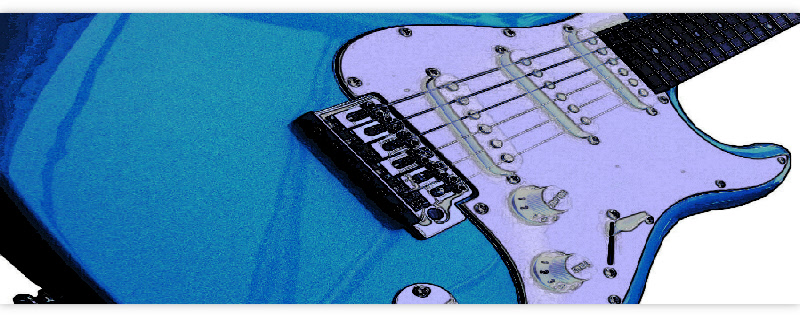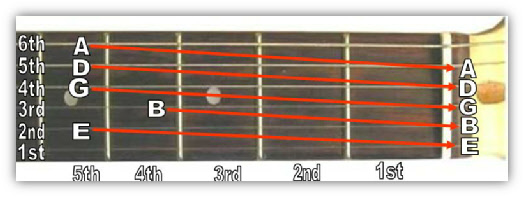



The Skool of guitar excellence


Moving on...and the same pattern again.
Put your 1st finger on the 4th string D at the 5th fret.
Play this note and it should sound the same as the open 3rd string G below it. If not, adjust the tuning peg to raise or lower the pitch of the open string until it does.
Now the next string is very slightly different, so watch out for it!
Put your 1st finger on the 3rd string G at the 4th fret.
Play this note and it should sound the same as the open 2nd string B below it. If not, adjust the tuning peg to raise or lower the pitch of the open string until it does.
Finally, back to the original pattern for the last string.
Put your 1st finger on the 5th string B at the 5th fret.
Play this note and it should sound the same as the open 1st string E below it. If not, adjust the tuning peg to raise or lower the pitch of the open string until it does.
Now to check how you got on. The open 1st and 6th strings are both the same note, E although one octave lower, so both should sound the same if you have tuned correctly. Give it a try.
You should at least check your tuning every time you play, not only to get familiar with this process, but to ensure the guitar will sound ok.
This diagram will help you understand how to tune your guitar.
Starting to get it?? Go slowly and be as accurate as you can because the tuning of the next string depends on it.
RockSkool: 8:Tuning the Guitar 2
